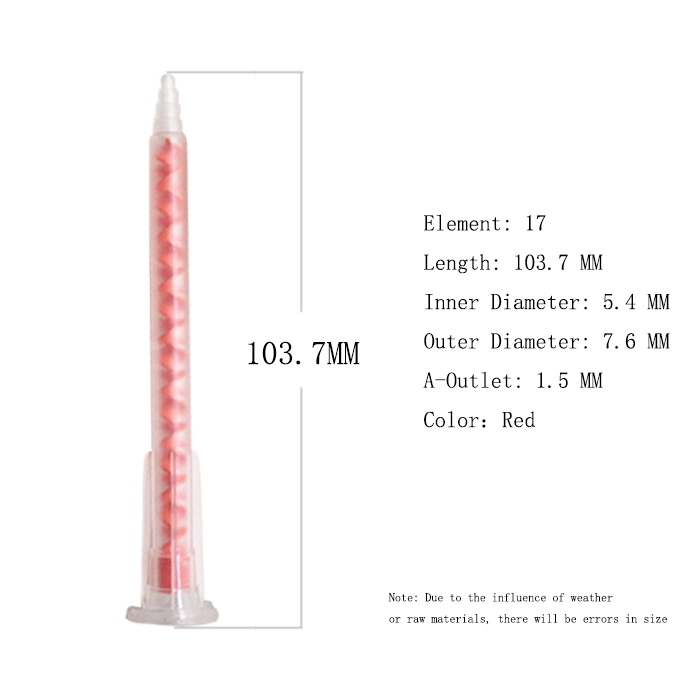In various industries, static mixing nozzles have become indispensable tools for achieving efficient and consistent mixing of two or more components. These innovative devices have revolutionized the process of blending materials, allowing for precise and controlled mixing without the need for external agitation. To appreciate the significance of static mixing nozzles, let’s delve into their intriguing history and explore how they have evolved over time.
Early Beginnings:
The origins of static mixing nozzles can be traced back to the mid-20th century when industries were seeking alternative methods to achieve thorough mixing. Traditional methods involved mechanical agitators, which were bulky, expensive, and prone to maintenance issues. The concept of static mixing, where fluids are mixed using only the energy of the flow itself, started gaining traction.
Emergence of Helical Elements:

In the 1960s, the development of helical elements marked a significant milestone in the evolution of static mixing technology. These elements were designed to be inserted into pipelines or nozzles, featuring carefully engineered twists and turns. As fluids pass through the helical elements, they are subjected to intense shearing and folding actions, resulting in efficient mixing.
Advancements in Geometry:
Throughout the 1970s and 1980s, researchers and engineers focused on enhancing the geometrical design of static mixing nozzles. This led to the introduction of various configurations, including the widely used “spiral” or “caterpillar” design. These designs feature a series of interleaving channels and barriers, strategically positioned to induce fluid intermingling and eliminate stagnant zones.
Square Static Mixing Nozzles:
In recent years, square static mixing nozzles have gained popularity due to their unique design and enhanced mixing capabilities. Unlike traditional helical designs, square static mixing nozzles feature multiple layers of intersecting channels, creating a complex matrix for fluid flow. This design promotes intense mixing and efficient dispersion of components, resulting in thorough blending.

Integration of Computational Fluid Dynamics (CFD):
With the advent of computational fluid dynamics (CFD) simulations in the late 20th century, researchers gained valuable insights into the flow behavior within static mixing nozzles. CFD enabled a deeper understanding of the velocity profiles, mixing efficiency, and pressure drops associated with different nozzle designs, including square static mixing nozzles. This computational approach facilitated the optimization of square static mixing nozzles for specific applications.
Material Innovations:
The materials used in static mixing nozzles have also undergone advancements over time. Early designs primarily utilized metals such as stainless steel, but as industries sought alternatives with better chemical resistance, thermoplastics like polypropylene and PVC became popular choices. These materials offered excellent durability, chemical compatibility, and the ability to withstand varying temperatures, including in square static mixing nozzles.
Application Diversification:
Over the years, static mixing nozzles have found applications in a wide range of industries. From chemical processing and adhesives to food and beverage production, these nozzles have proven to be versatile tools for achieving consistent mixing results. Square static mixing nozzles, with their enhanced mixing capabilities, are particularly suitable for applications that require intense blending and dispersion of components.
Conclusion:
In short, every advancement in static mixing nozzles can effectively improve industrial production efficiency, and its production cost will be lower. The square static mixing nozzle is the first choice of many manufacturers now, but the cost is more expensive than the ordinary spiral mixing nozzle. But in the future, the professional static mixing nozzle manufacturers will use better design of elemental structures and materials to make new static mixing nozzles.
